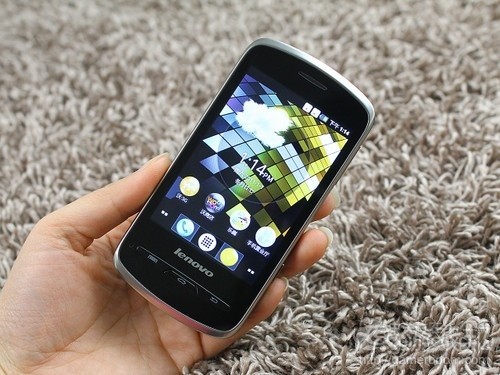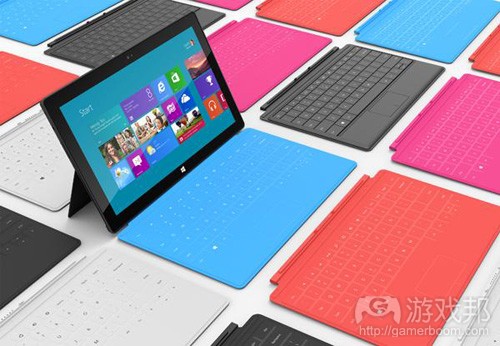每日观察:关注2012年智能手机配件市场规模(6.20)
1)Canalys分析师最近预测,售价低于200美元的中国智能手机今年出货量将占比25%,到2015年这一数据将增长至40%。
分析师Nicole Peng指出,中国本土智能手机价格下滑现象明显,像联想A65这种新的低端设备售价约700元人民币(约110美元),而去年第四季度同种规模的手机售价则约1000元人民币(约158美元)。
2)微软日前宣布将推出新款高端平板电脑产品Surface,该设备分为两个不同版本,其中的高级版本运行的是Windows 8 Pro操作系统,而另一版本则运行针对平板电脑设备的Windows RT操作系统。这两者都采用10.6英寸的屏幕,因此比苹果iPad略为宽大。
据微软所称,Surface设备将支持运行游戏以及Xbox相关产品,但并未透露定价标准。采用Windows RT操作系统的Surface将划分32GB和64GB两种型号,而Pro版本的Surface则将推出64GB和128GB两种型号,其售价将与Ultrabook类型的PC更为接近。
Windows RT平板电脑将于Windows 8同时亮相,而Pro平板电脑将于3个月之后再发布。
3)ABI Research最新数据预测,2012年智能手机配件市场规模将达200亿美元,到2017年这一数据将增长至380亿美元。与此同时,功能性手机配件市场规模将降至120亿美元。
平均每名智能手机用户在每部手机上的配件消费额为56.18美元,而功能性手机用户的这一数额仅为28.17美元。
ABI设备、应用及内容高终分析师Michael Morgan指出,智能手机普及率的增长推动了手机配件的智能化设计,促使后者重视提升用户交互性、产品价值和品牌辨识度。
4)Chupamobile最近发布的开发者调查信息图表显示,开发者从头制作一款应用的时代已经终结,他们重用及购买现成组件开发产品的意愿更高。
将近50%受访者已在使用第三方组件开发应用,还有30%受访者有意在下一个开发项目中采取这种方法。
45%开发者制作一款应用时使用1至3种开发组件,20%开发者甚至使用3种以上的组件。
超过半数受访者认为,采用并植入外部组件可节省30%以上的开发时间。
从中间件授权意愿的调查上看,多数开发者不愿与外界共享自己的技术。尽管有70%以上受访者表示计划与他人分享自己的工具,但有80%以上开发者尚未采取这种行动。
在这些受访者中,面向iOS和Android平台开发产品的开发者占比超过50%,HTML5支持率则是15.6%,Windows Mobile仅为9.3%。
(本文为游戏邦/gamerboom.com编译,拒绝任何不保留版权的转载,如需转载请联系:游戏邦)
1)Sub-$200 smartphones to nab 40 per cent market share in China by 2015
by Zen Terrelonge
Chinese OEMs ZTE, Huawei and Lenovo entered the smartphone market with low-end devices, but have since announced plans to tackle the high-end market.
However, analyst Canalys reckons China’s smartphone shipments will be increasingly driven by sub-$200 models, rising from 25 per cent this year, to account for 40 per cent of the market within the next three years.
Meanwhile, the local OEMs are expected to face increasing pressure from the likes of Alibaba and Baidu, both of which started out as online search engines before breaking into the phone space – similar to Google.
Nicole Peng, Canalys research director for China, said: “Price erosion is accelerating. New low-cost models, such as the Lenovo A65, have come to market at around RMB700 (US$110). In Q4 last year, devices with a similar specification were priced around RMB1,000 (US$158).
“Established mobile phone makers, such as Yulong, Gionee and K-Touch, have the advantages of strong operator relationships and channels. In addition, emerging vendors, like Xiaomi and Green Orange, are building a reputation quickly in the youth market.”(source:mobile-ent)
2)Microsoft enters the tablet market with new Surface hardware
by Tom Curtis
During a secretive and much-anticipated press event on Monday, Microsoft introduced the Surface, a brand new high-end tablet line that looks to bridge traditional PC computing with the popular mobile market.
Microsoft will offer two distinct versions of the game-enabled Surface hardware: A premium model running on Windows 8 Pro and another model running on the tablet-focused Windows RT. Both devices include a 10.6 inch display, making them just slightly larger than Apple’s iPad.
This new line of devices is particularly noteworthy for Microsoft, as the company very rarely produces its own consumer facing hardware. Outside of the Surface, the company’s other hardware offerings have included only the Xbox, the Kinect, the Zune, the ill-fated Kin, and a few other assorted computer peripherals.
During its presentation, Microsoft confirmed that the Surface would in in fact support games and tie in with its existing Xbox brand. Exact details on the device’s game-focused features, however, remained scarce for now.
In terms of the device’s physical features, the Windows RT Surface will include an Nvidia ARM processor, while the more robust Windows 8 version will include an Intel i5 CPU. The devices will also include ports for USB, SD cards, and Micro HD Video.
Microsoft also hopes to make the device function a bit more like a laptop with a built-in stand and a Touch Cover that includes an accelerometer, and folds out into a touch-based pressure sensitive keyboard.
The company chose to stay quiet on pricing, but Microsoft said that Surface for Windows RT will come in 32GB and 64GB models, and will be priced on par with “comparable tablets based on ARM.” The Pro version, meanwhile, will offer 64GB and 128GB models, and will allegedly be priced much like Ultrabook-class PCs.
As for the Surface’s launch date, Microsoft said the Windows RT version’s debut will coincide with the release of Windows 8, while the Pro version will launch three months later. (source:gamasutra)
3)Smartphone accessory revs to hit $38bn by 2017
by Zen Terrelonge
Average owner will spend around $56.18 per device.
New data from researcher ABI says smartphones will account for $20 billion in accessory revenues in 2012, more than half of the $36 billion generated across all mobile handsets.
And the smartphone market is only expected to continue growing too, with accessory revs reaching $38 billion within the next five years.
Meanwhile, feature phone accessory revs are set to fall to $12 billion, a market which was once captained by Nokia third-parties several years ago, powered by psychedelic removable fascias.
The average smartphone owner will shell out around $56.18 per device on extras, with feature phone users spending half that at around $28.17 per device.
Michael Morgan, senior analyst for devices, applications & content, ABI Research, said: “The increasing penetration of smartphones is driving a shift in accessory design toward smart accessories that drive higher levels of consumer interaction, product value, and brand recognition.
“For new market entrants, developing brand recognition is paramount in capturing market share from the incumbents. This is best accomplished by the development of engaging, innovative accessories that extend the value proposition of today’s mass market accessories.”(source:mobile-ent)
4)Half of all developers use third party tools to build apps
by Tim Green
And 70 per cent believe there’s an opportunity to sell on their own components.
Chupamobile, which offers a market for app tools, surveyed a mix of indie developers and those working for big organisations, and found an increasingly practical approach to using third party middleware.
It concluded the days of developing an app from scratch are over and developers want to re-use and buy already made components.
Almost 50 per cent of the respondents have already used third party components, while another 30 per cent plan to use them for their next project.
The study also found 45 per cent of developers using external tools use between one and three components per app. 20 per cent of themes more than three.
Interestingly, for all the willingness to license middleware, most developers don’t share their own tech.
Over 80 per cent have not made available to others any of their own components yet, although over 70 per cent believe there is an opportunity to do so.
Paolo De Santis, VP of operations and business development at Chupamobile, said: “Developers have a very positive attitude toward the new model of building apps integrating external components instead of re-inventing the wheel.
“(The study) also shows that there is a clear issue with trust and quality, which we are addressing and focusing on.
“Chupamobile’s platform has been expressly built to tackle those developers issues: it makes it fast and easy to control the quality of each component submitted before this being published”.(source:mobile-ent)











































 闽公网安备35020302001549号
闽公网安备35020302001549号